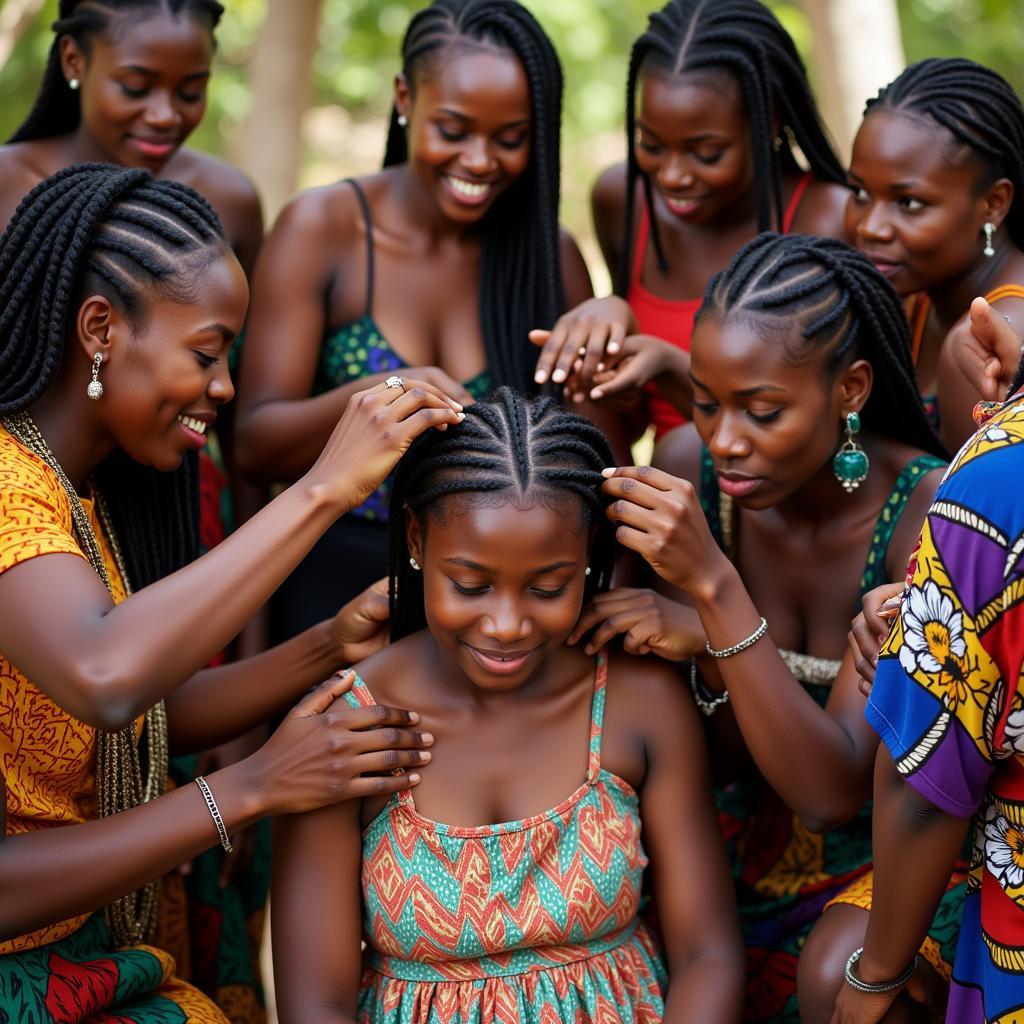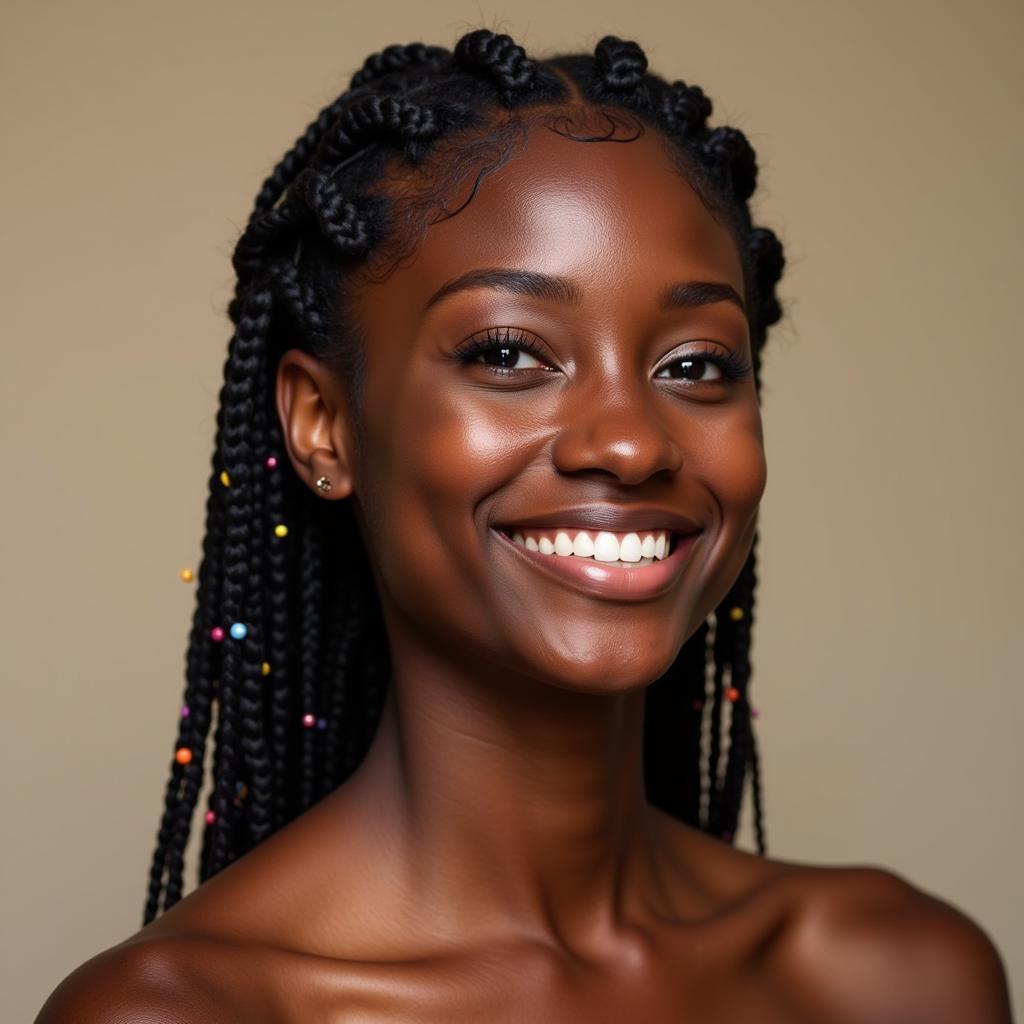African hair braiding styles in 2015 showcased the immense versatility and artistry deeply rooted in African culture. Far beyond mere aesthetics, these intricate hairstyles transcended time, serving as a testament to the creativity and heritage passed down through generations. From the iconic cornrows to the elegant twists and locs, African hair braiding styles continued to captivate the world with their intricate designs and cultural significance.
A Celebration of Heritage: The Significance of African Hair Braiding
For centuries, African hair braiding has held a place of honor, acting as a visual language that communicates identity, status, and heritage. Each region, and often each tribe, developed unique braiding patterns imbued with symbolism and meaning.
- Social Status: Intricate braids often denoted wealth and high social standing, requiring skilled hands and considerable time to create.
- Cultural Identity: Specific braiding patterns could instantly signal tribal affiliation and origin, fostering a sense of community.
- Rites of Passage: Different hairstyles often marked significant life events, such as coming-of-age ceremonies, weddings, and periods of mourning.
 Women participating in a traditional African hair braiding ceremony
Women participating in a traditional African hair braiding ceremony
A Tapestry of Styles: Popular African Hair Braiding Styles in 2015
The year 2015 witnessed a resurgence of traditional African hair braiding styles, reimagined with a modern flair.
Cornrows: Classic and Everlasting
Cornrows, a cornerstone of African hair braiding, continued their reign in 2015. This style, characterized by braids woven closely to the scalp, offers endless possibilities for creativity.
- Straight-back Cornrows: The epitome of classic elegance, straight-back cornrows provide a sleek and timeless look.
- Side Cornrows: A playful variation, side cornrows add a touch of asymmetry and movement.
- Ghana Braids: Known for their raised appearance, Ghana braids make a bold statement.
 A woman with intricate Ghana braids adorned with beads
A woman with intricate Ghana braids adorned with beads
Twists and Locs: Embracing Natural Beauty
Natural hair textures took center stage in 2015, with twists and locs gaining immense popularity.
- Two-Strand Twists: Simple yet chic, two-strand twists offer a low-maintenance way to embrace natural hair.
- Senegalese Twists: Achieved using extensions, Senegalese twists create a stunningly elegant look.
- Locs: A journey of patience and self-expression, locs embody the beauty of natural hair growth.
Maintaining Your Braids: Tips for Long-Lasting Styles
- Nighttime Care: Wrap your hair in a satin scarf or use a satin pillowcase to prevent friction and frizz.
- Moisturize Regularly: Keep your scalp and hair hydrated with a water-based moisturizer or hair oil.
- Avoid Over-Styling: Give your hair a break from tight styles occasionally to prevent breakage.
Conclusion: A Timeless Legacy of Beauty
African hair braiding styles continue to inspire and empower, connecting us to a rich cultural tapestry. These styles are a celebration of creativity, heritage, and the beauty of diversity.
Expert Insight:
“African hair braiding is a living art form,” says Abena Nsia, a Ghanaian hair stylist and cultural historian. “It’s a way to express ourselves, connect with our ancestors, and share our heritage with the world.”
Whether you’re drawn to the classic elegance of cornrows or the natural beauty of twists and locs, African hair braiding offers a world of possibilities.
Leave a Reply